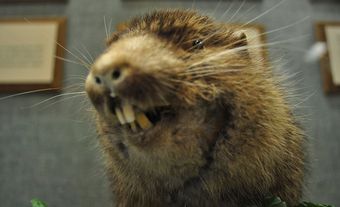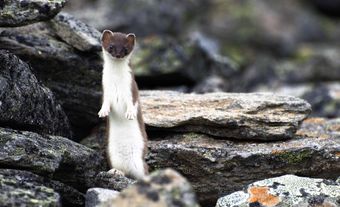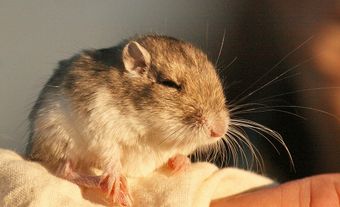Muskrat
Muskrat (Ondatra zibethicus), fairly large rodent common throughout much of North America in wetlands and waterways where water 1-2 m deep supports rooted vegetation and does not freeze to the bottom. It was introduced to Eurasia around 1905.
Description
Muskrats are brown, chunky in appearance, and 40-63 cm long, with a distinctive, laterally flattened, sparsely haired tail contributing 18-25 cm. Adults weigh 0.5-1.8 kg. Large hind feet and slightly webbed toes are edged with short, stiff hairs (swimming fringes). Four incisors cut and hold plant food and 12 cheek teeth grind it. Paired glands beneath the tail base produce musk for marking territories. Two or 3 litters of 5-7 (range 1-11) young are born Apr-Aug.
Habits
In marshes muskrats build domelike houses of vegetation up to 1.2 m high and 1.8 m across; in ponds and streams they dig bank burrows. They swim and dive well and eat many kinds of aquatic plants, especially cattails. In winter they eat in "push-ups," minihouses over plunge holes in the ice, where they can be trapped.
Biological Importance
Mink are their most important nonhuman predators. Their durable pelts are an important source of income for Canadian trappers. Muskrats occasionally damage banks and dams. Wildlife biologists manage muskrat populations for sustained yields by improving habitat and regulating harvests. Muskrat numbers decline drastically every 6-10 years because of infectious diseases and breeding failures.

 Share on Facebook
Share on Facebook Share on X
Share on X Share by Email
Share by Email Share on Google Classroom
Share on Google Classroom






